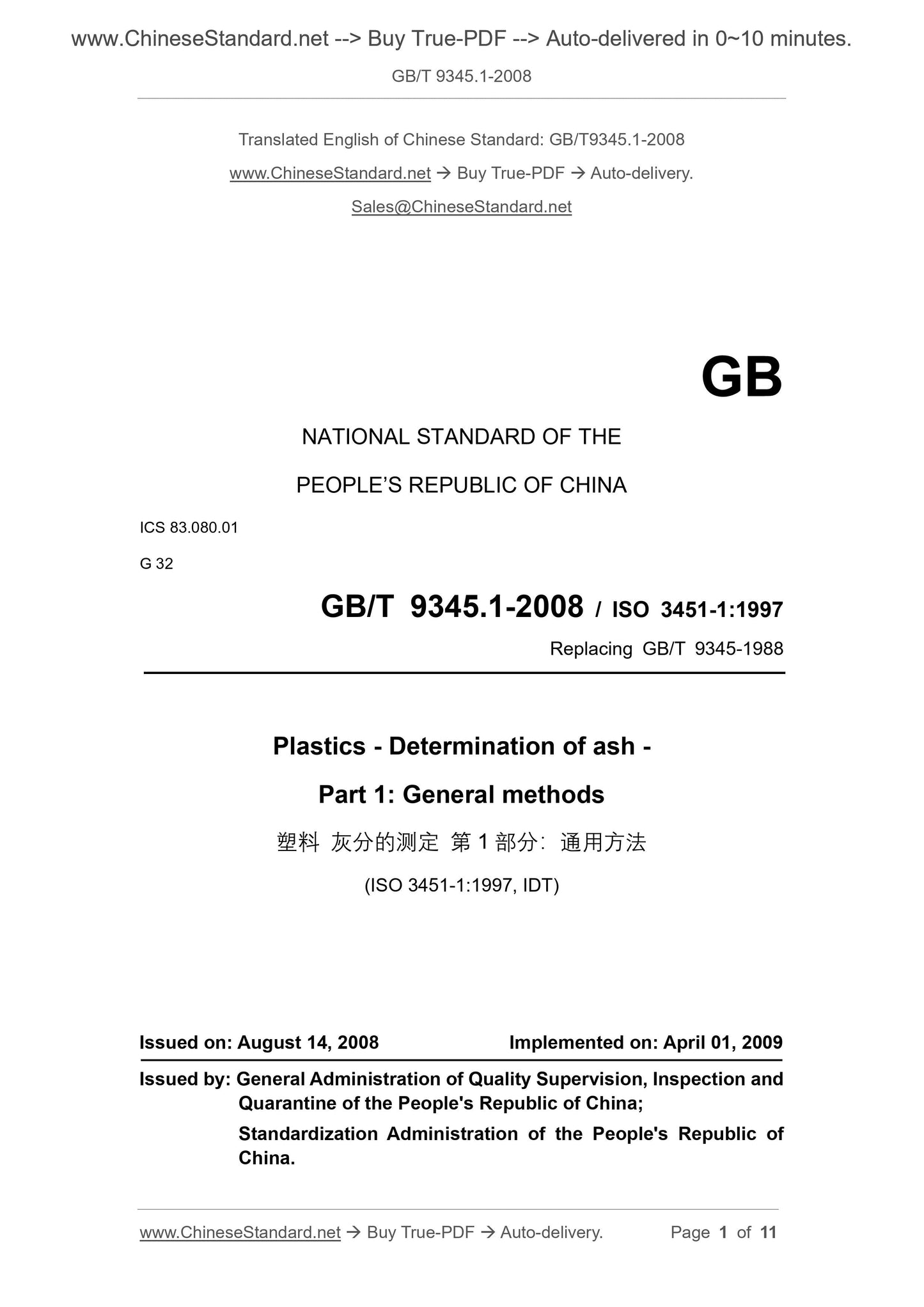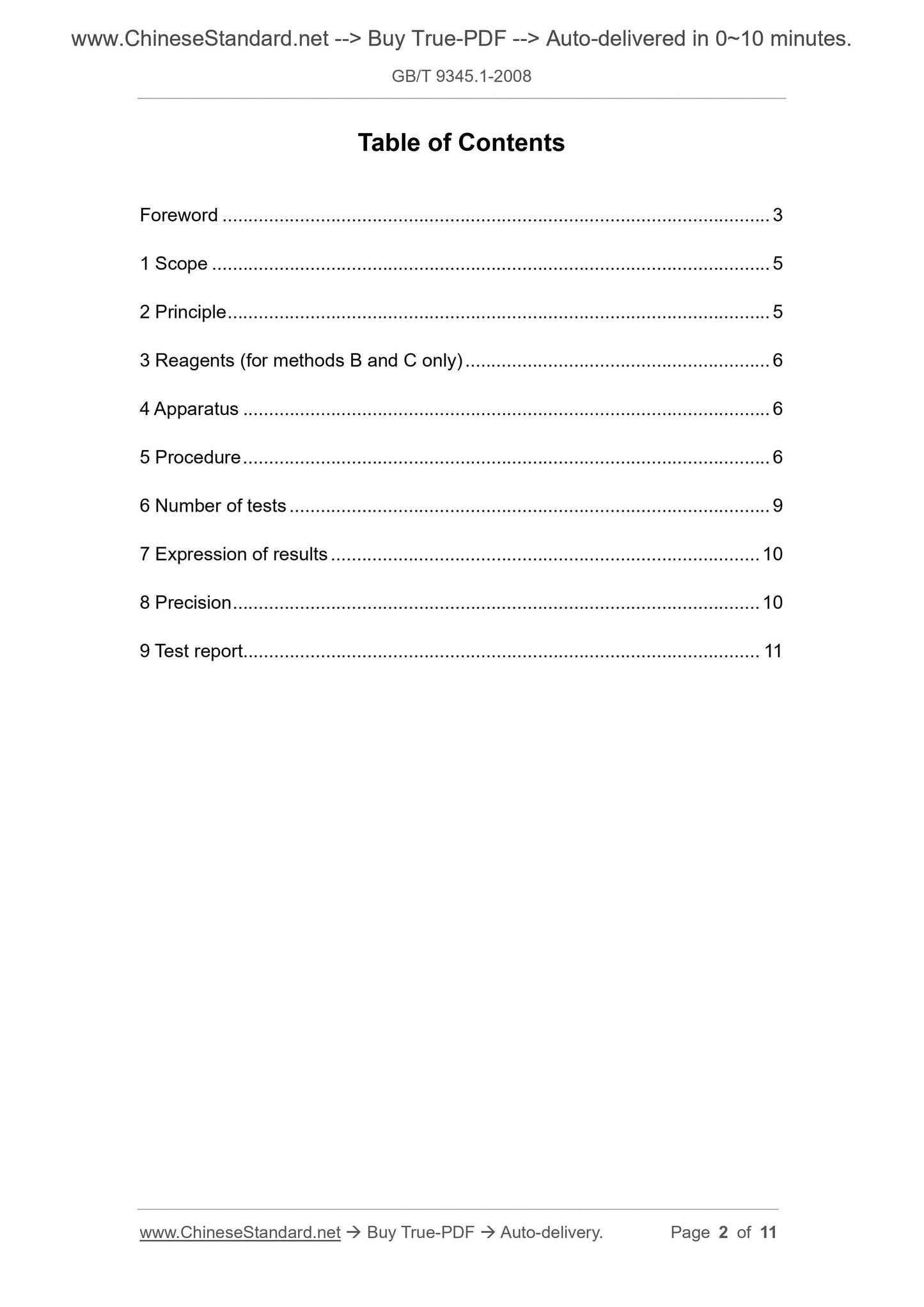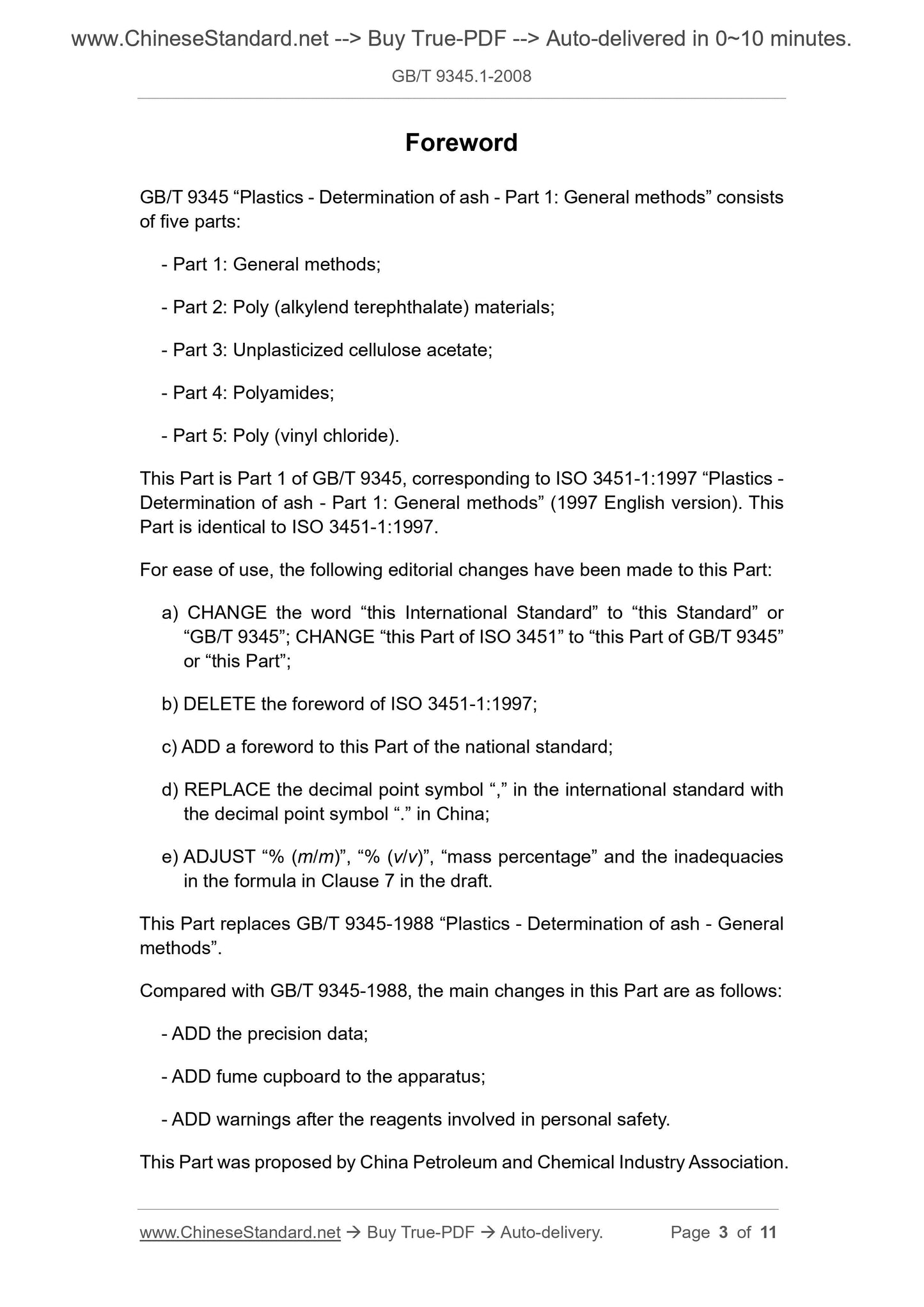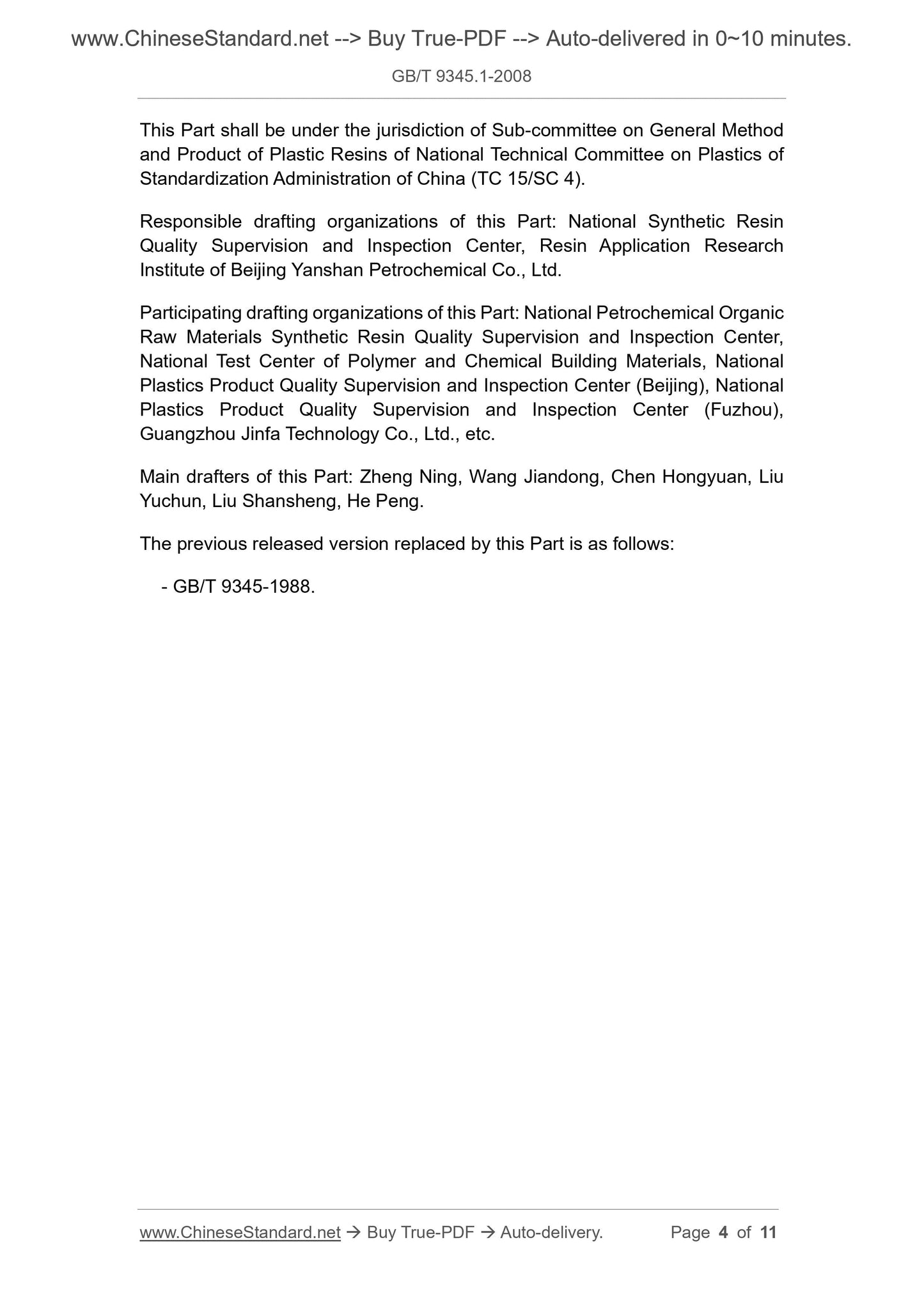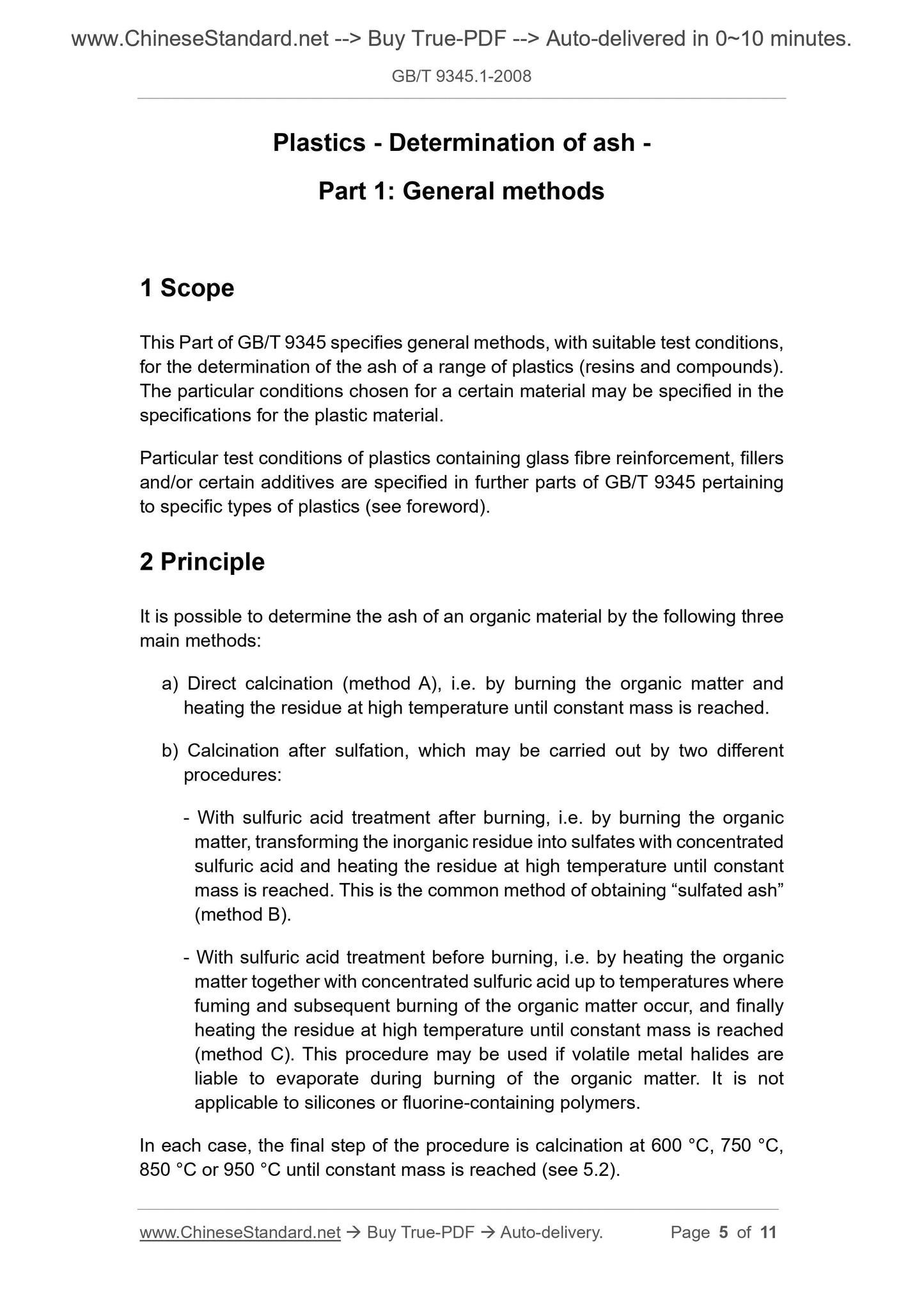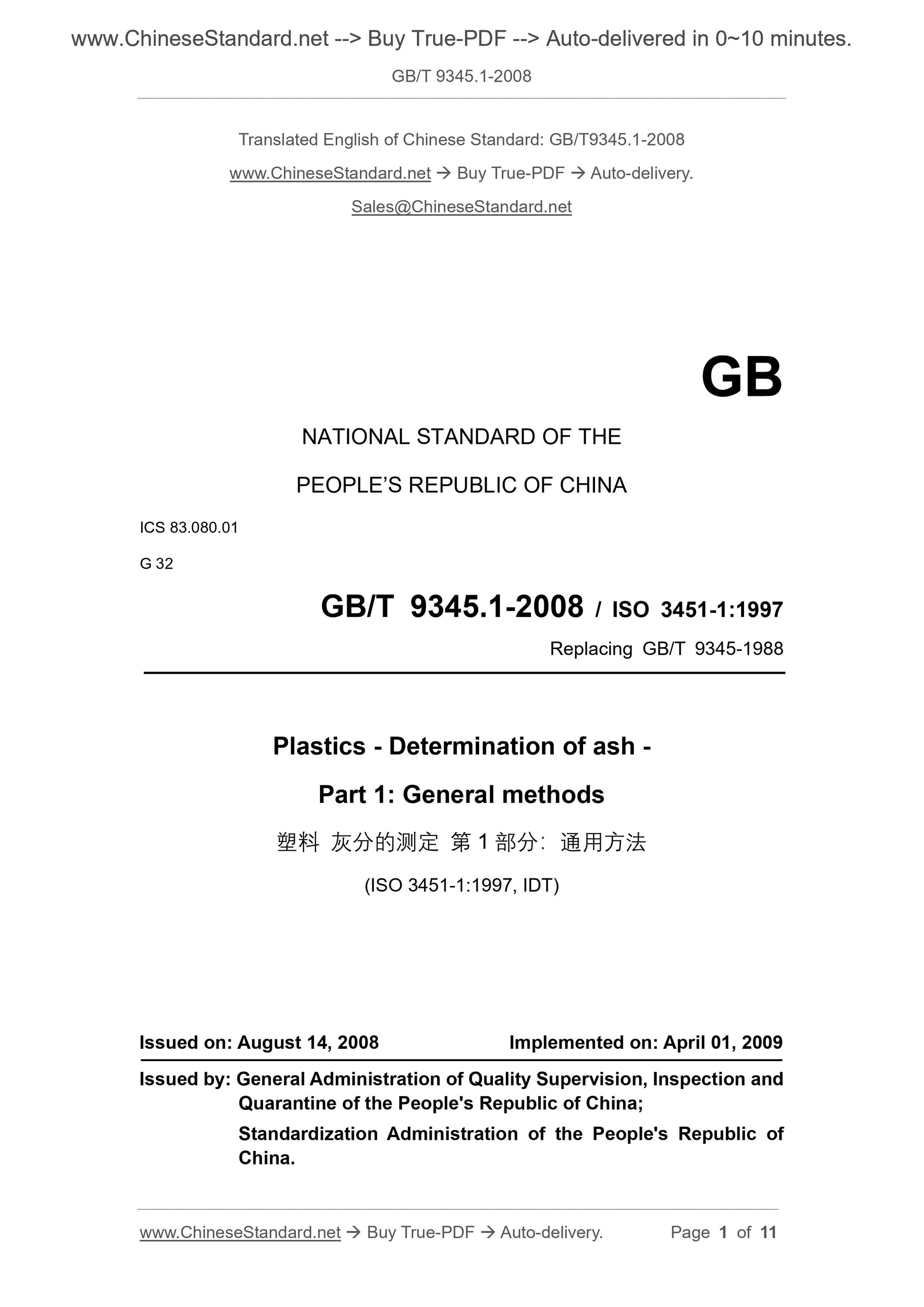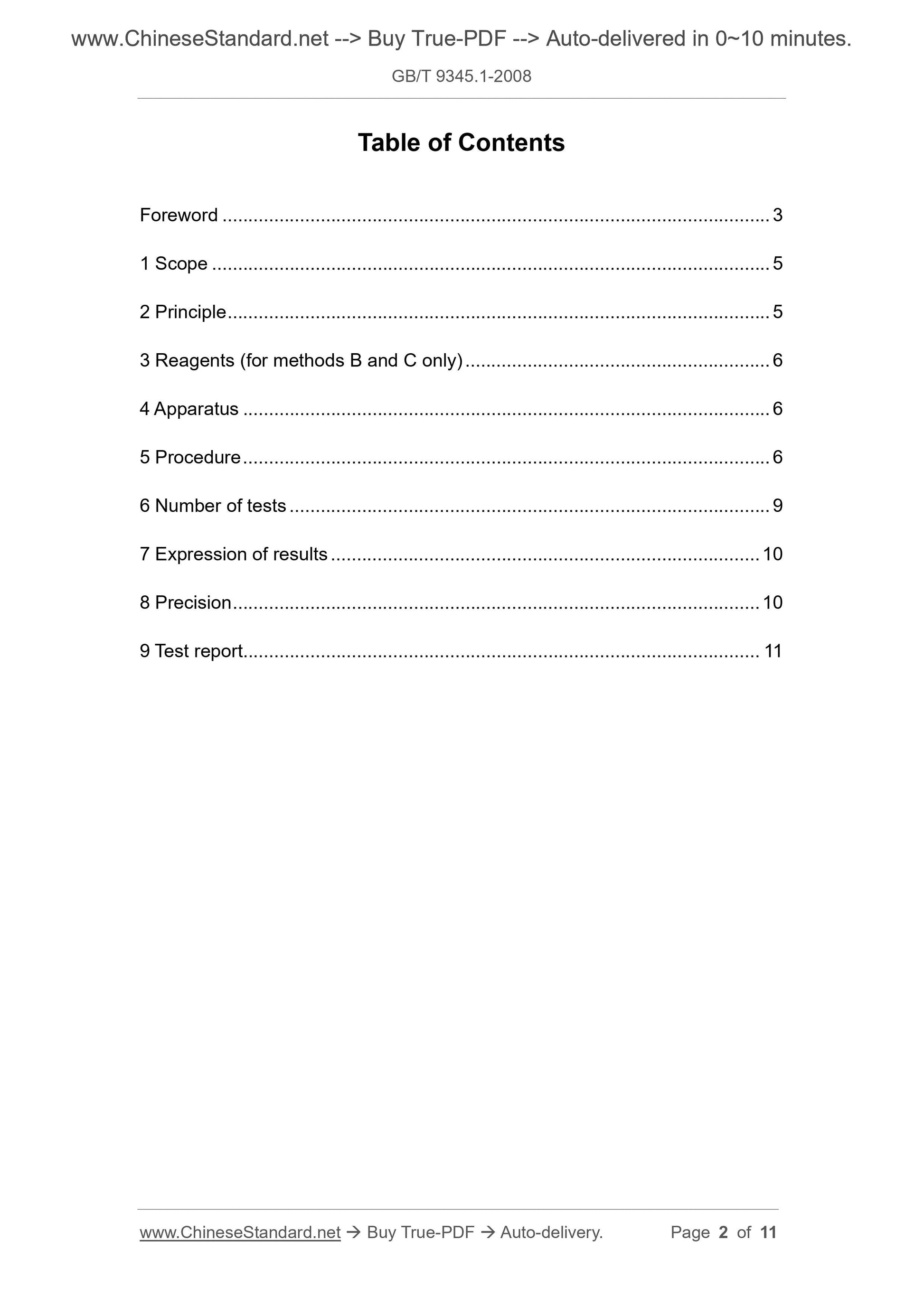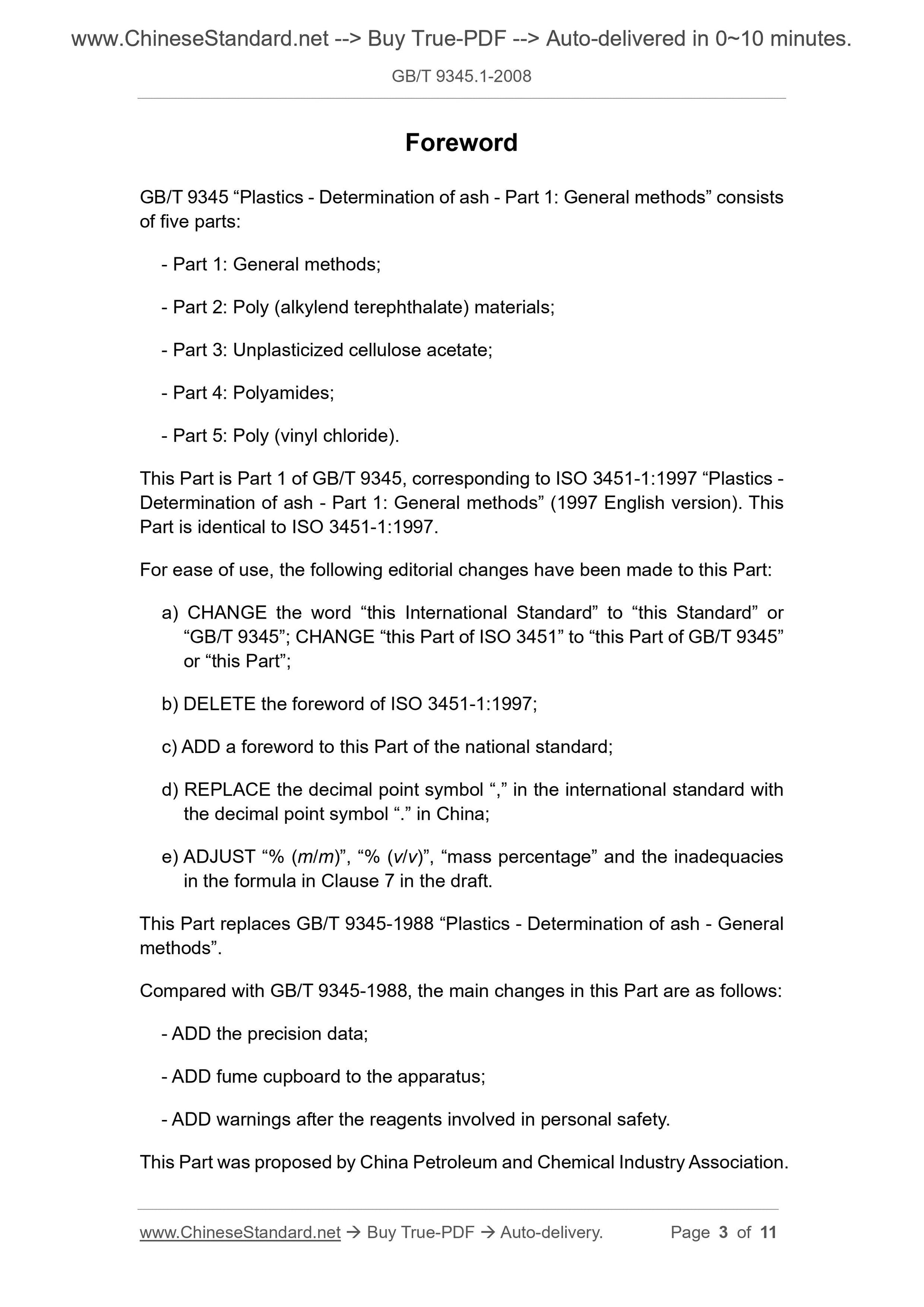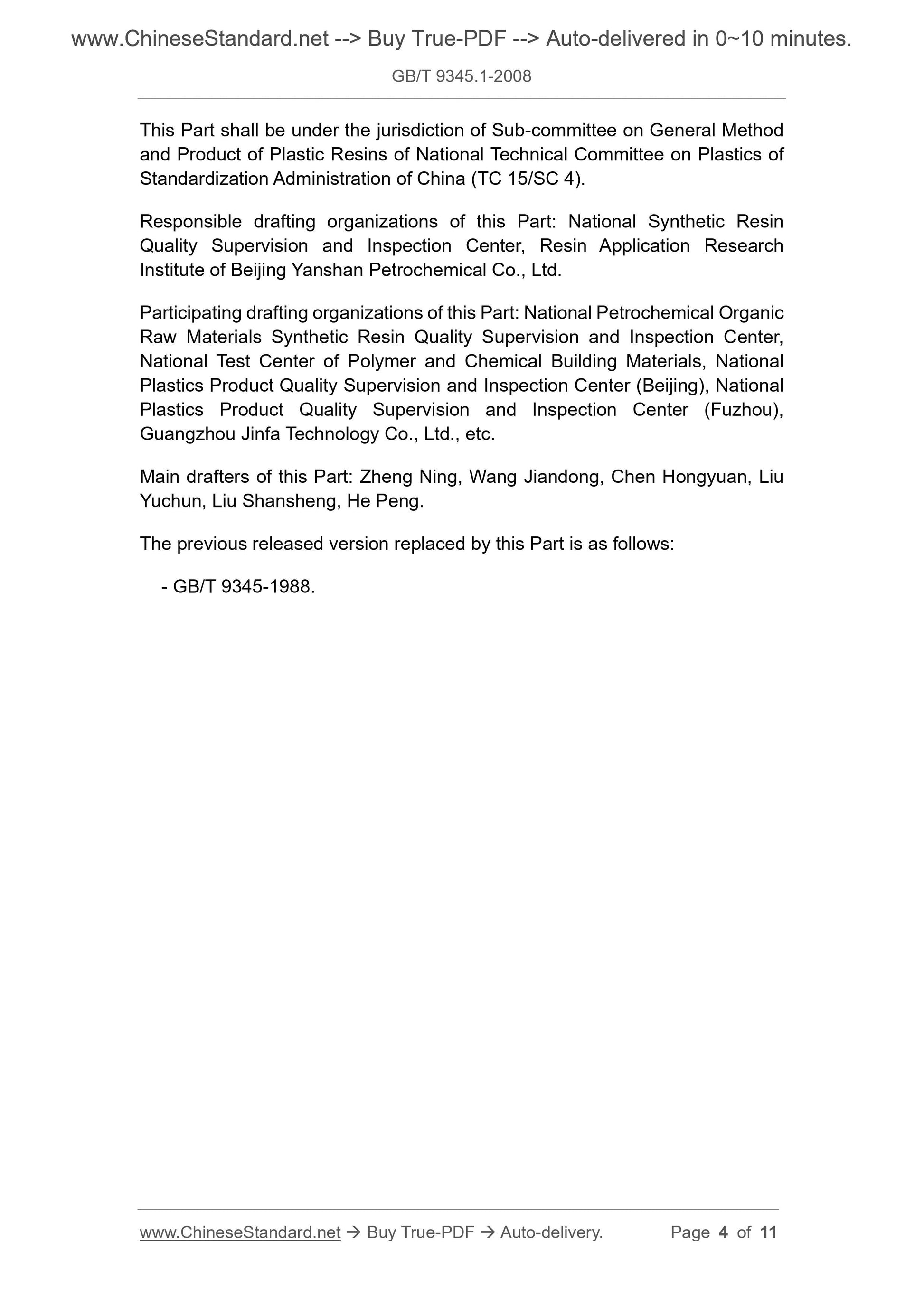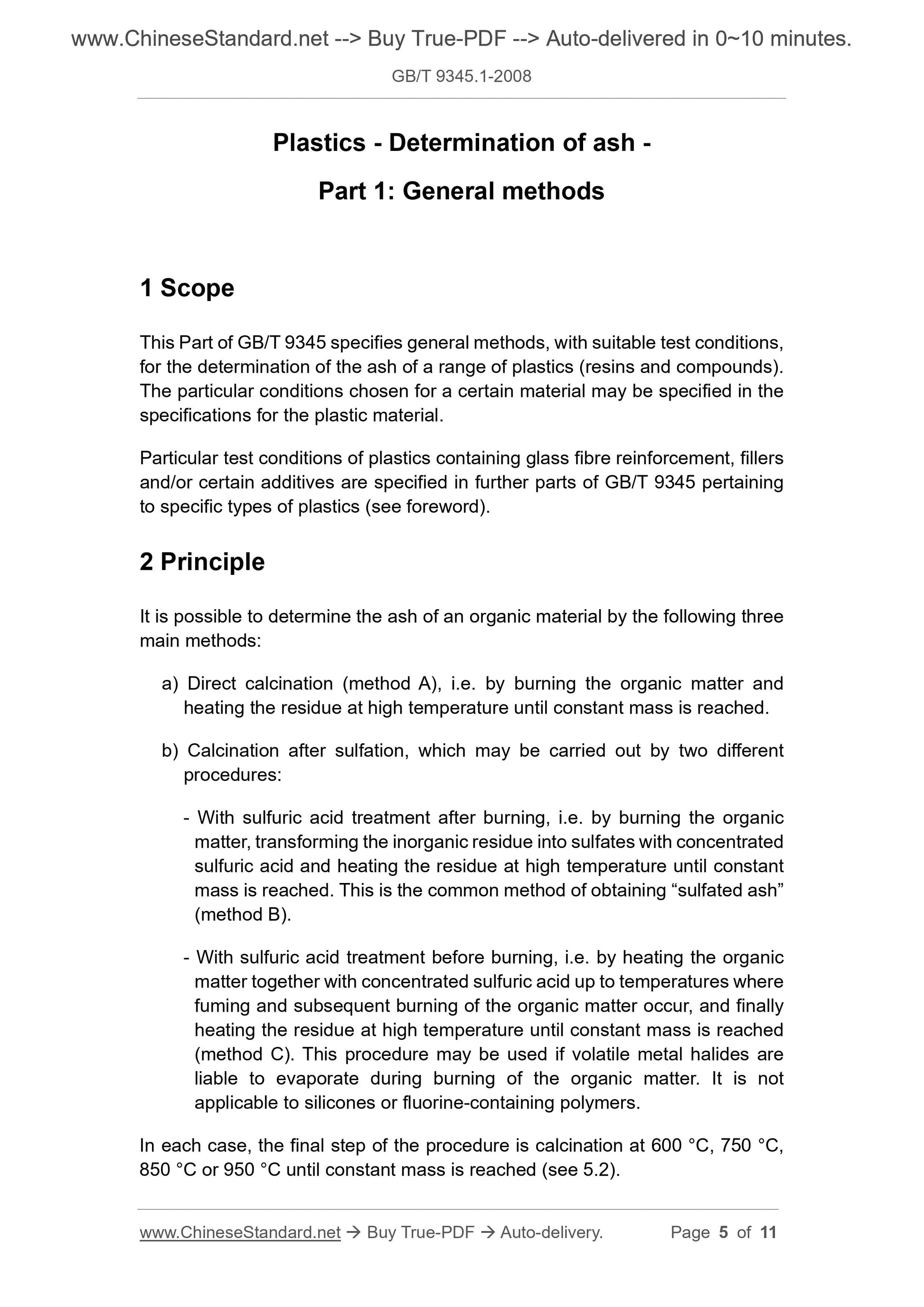1
/
of
5
www.ChineseStandard.us -- Field Test Asia Pte. Ltd.
GB/T 9345.1-2008 English PDF (GB/T9345.1-2008)
GB/T 9345.1-2008 English PDF (GB/T9345.1-2008)
Regular price
$70.00
Regular price
Sale price
$70.00
Unit price
/
per
Shipping calculated at checkout.
Couldn't load pickup availability
GB/T 9345.1-2008: Plastics -- Determination of ash -- Part 1: General methods
Delivery: 9 seconds. Download (and Email) true-PDF + Invoice.Get Quotation: Click GB/T 9345.1-2008 (Self-service in 1-minute)
Newer / historical versions: GB/T 9345.1-2008
Preview True-PDF
Scope
This part of GB/T 9345 specifies general methods for determining ash in various plastics (resins and mixtures) and suitable test conditions.The specific conditions selected for a material can be specified in the material specification for the plastic.
Specific test conditions for plastics containing reinforcing glass fibers, fillers and/or certain additives will be specified in GB/T 9345.
It is specified in other parts of the type of plastic (see the preface).
Basic Data
| Standard ID | GB/T 9345.1-2008 (GB/T9345.1-2008) |
| Description (Translated English) | Plastics -- Determination of ash -- Part 1: General methods |
| Sector / Industry | National Standard (Recommended) |
| Classification of Chinese Standard | G32 |
| Classification of International Standard | 83.080.01 |
| Word Count Estimation | 7,739 |
| Date of Issue | 2008-08-14 |
| Date of Implementation | 2009-04-01 |
| Older Standard (superseded by this standard) | GB/T 9345-1988 |
| Adopted Standard | ISO 3451-1-1997, IDT |
| Regulation (derived from) | National Standard Approval Announcement 2008 No.14 (Total No.127) |
| Issuing agency(ies) | General Administration of Quality Supervision, Inspection and Quarantine of the People's Republic of China, Standardization Administration of the People's Republic of China |
| Summary | This standard specifies the determination of a variety of plastic (resin and mix) General method of ash and appropriate test conditions. Specific conditions of a material selected may require specification of the plastic material in the. Reinforcing materials comprising glass fibers, fillers and/or additives, some of the specific experimental conditions will be specified in plastics GB/T on other specific types of plastic parts in 9345 (see Introduction). |
Share
